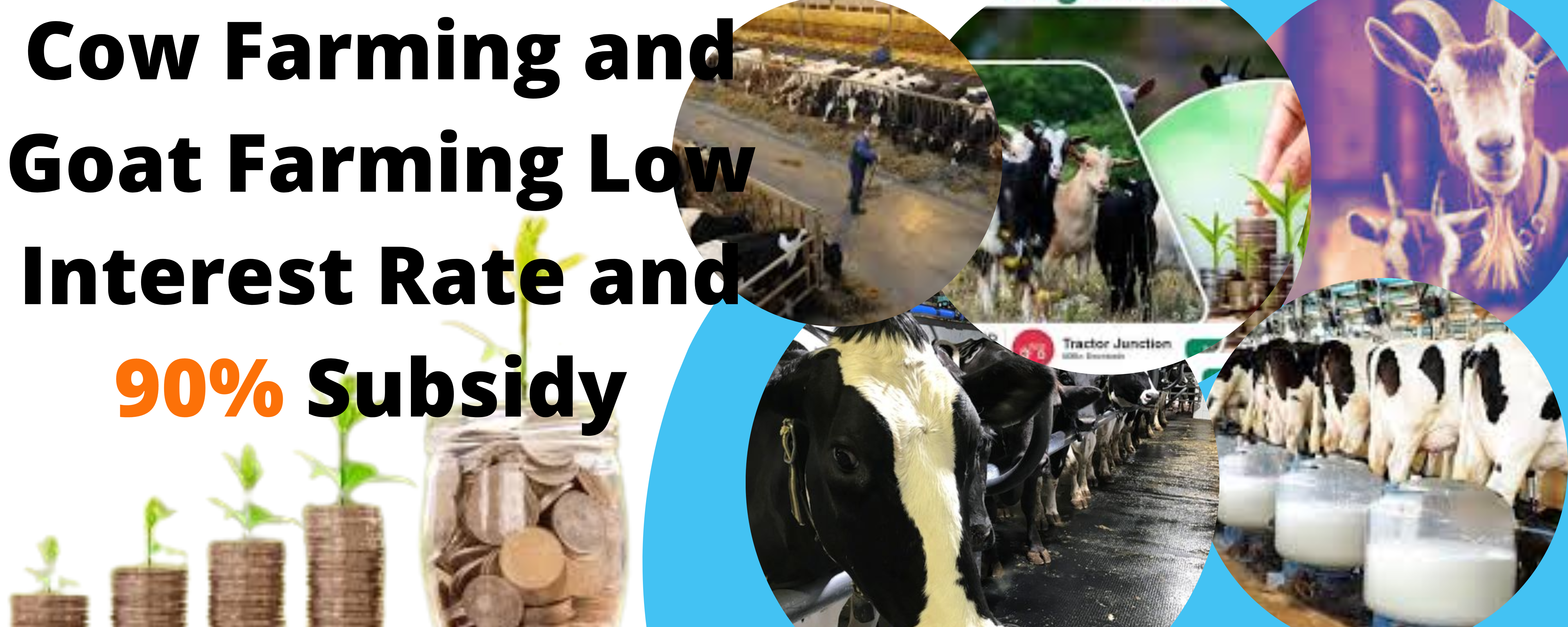

Agriculture Loan
Given below is the list of types of agriculture loans that you can avail for yourself:
- Crop Loan: These types of loans are also known as Retail Mudra Loans is a type of loan which allows a farmer From Low Intrest Rate and 90% subsidy to meet his short-term expenses arising due to cultivation of crops, maintenance of farm equipment, and other post farm activities. The farmer gets a credit card called the Kisan Credit card on availing this type of loan which they can use to withdraw money to make necessary purchases to meet their farming needs.
- Agricultural Term Loan: These are long term loan schemes which a farmer can avail to meet their non-seasonal expenses. One can avail this loan to buy or upgrade equipment such as windmills, solar power, etc. The repayment tenure for such kind of loan schemes can go up to 4 years allowing the farmer to repay the amount in a convenient manner.
- Solar Pump Set Loan: If a farmer is involved in small irrigation projects and require capital to buy photo voltaic pumping system, then availing a solar pump set loan is the appropriate option. The repayment tenure for such loan schemes go up to 5 years.
- Loan for Allied Agricultural Activities: Farmers involved in allied agricultural activities can apply for such type of loans if they need to raise working capitals to meet their farming expenses.
- Farm Mechanisation Loan: If a farmer requires working capital so that they can either purchase new farming machineries or upgrade their existing ones such as purchasing a new tractor or getting an old one repaired, then they can apply for these types of loan schemes.
Fish Farming
Fish farming is a form of aquaculture in which fish are raised in enclosures to be sold as food. It is the fastest growing area of animal food production. Today, about half the fish consumed globally are raised in these artificial environments. Commonly farmed species include salmon, tuna, cod, trout and halibut. These “aquafarms” can take the form of mesh cages submerged in natural bodies of water, or concrete enclosures on land.
According to the United Nations Food and Agriculture Organization, roughly 90% for world Fish stocks depleted or recovering and need of being urgently rebuilt. Fish farming is hailed by some as a solution to the overfishing problem. However, these farms are far from benign and can severely damage ecosystems by introducing diseases, pollutants and invasive species. The damage caused by fish farms varies, depending on the type of fish, how it is raised and fed, the size of the production, and where the farm is located.
One significant issue is that—rather than easing the impact on wild populations—the farms often depend on wild fish species lower on the food chain, like anchovies, in order to feed the larger, carnivorous farmed species. It can take up to five pounds of smaller fish to produce one pound of a fish like salmon or sea bass. Overfishing of these smaller “forage” fish has repercussions throughout the ocean ecosystem.
As is the case with industrial animal farms on land, the fish are often housed in unnaturally crowded and cramped conditions with little room to move. Fish may suffer from lesions, fin damage and other debilitating injuries. The overcrowded and stressful conditions promote disease and parasite outbreaks—such as sea lice—that farmers treat with pesticides and antibiotics. The use of antibiotics can create drug-resistant strains of diseases that can harm wildlife populations and even humans that eat the farmed fish.
Escaped fish introduce yet another threat into the environment. Each year, hundreds of thousands of fish escape farms and threaten the genetic diversity and survival of native species. High stocking densities result in a significant amount of pollution from fish excrement and uneaten food, which in turn lead to poor water quality high in ammonia and low in oxygen. Outdoor fish farms can also attract predatory marine animals, such as sea birds and sea lions, who are sometimes poisoned or shot by aquafarmers for eating the fish.
Despite evidence to the contrary, it is still a common misconception that fish do not feel pain. Slaughter methods in the aquaculture industry are appalling. Little to no attention is given to the suffering of the animals and most are fully conscious during slaughter, which can take many minutes. Some species, such as salmon in the United States, are also starved for many days to empty the gut before they are sent to slaughter. Fish are most often not stunned and are killed by bleeding out, being hit on the head repeatedly, suffocating or freezing. In the US, as with many other countries, there are no regulations to ensure the humane treatment of fish.
Years of unregulated and underreported catches of bluefin tuna in the Mediterranean Sea and Atlantic Ocean are threatening the existence of this severely overfished species. To meet the high and growing demand for sushi in Japan and elsewhere, ranching of bluefin tuna is becoming a popular industry and is exacerbating the problem. Fisherman use longlines and purse seines to catch the tuna before they reach breeding age and have time to reproduce. They are then kept in sea farms for 3–6 months and fattened with thousands of pounds of smaller wild-caught fish before being killed and exported.
How to Apply for an Agriculture Loan?
If you are looking to apply for an agriculture loan, it is advisable to research your options online Mudra Loan and apply for a loan of your choice by visiting the nearest branch of a lender. When visiting the branch, ensure that you carry the required documentation along with you to quicken the application process.
Certain lenders may also give prospective borrowers the option to apply for an agriculture loan online through their official websites. In this case, you will need to navigate to the respective website, click on ‘Apply Now’, enter the required details in the application form, and upload the necessary documents onto the website.
Regardless of the channel that you choose, the lender will verify your application and approve it. Once your application gets approved, the loan amount will be disbursed into your account.
